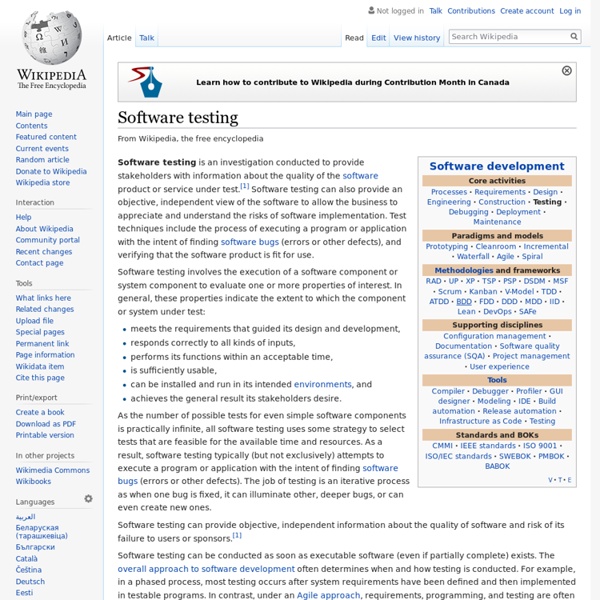



Intro to SW Test Automation Today,‘Test automation’ is a much talked about topic in the world of software testing and quality. In this article Saket Godase discusses the basics of test automation. What is test automation? He looks at the types oftest automation and also discusses the various myths about test automation. An Introduction to Software Test Automation Abstract Thisarticle is an introduction to software test automation and will serveas a tutorial to the testers who are new to Test Automation. Software TestingThough there are many formal definitions of software testing it basically boils down to “Software testing is a process used to identify the correctness, completeness and quality of developed computer software.”In reality, testing can never establish the correctness of the software. Manual Testing –is defined as developing and executing tests that rely primarily ondirect human interaction throughout the entire test case, especially interms of evaluating correctness and ascertaining test status. 1. 2.
Certifying Software Testers Worldwide - ISTQB® International Software Testing Qualifications Board Cuke4Ninja: The Secret Ninja Cucumber Scrolls | Cucumber | Gherkin | Agile Acceptance Testing | Behaviour Driven Development Software QA and Testing Resource Center specs2 @ GitHub Specify your software using both text and Scala code class HelloWorldSpec extends Specification { def is = s2""" This is a specification for the 'Hello world' string The 'Hello world' string should contain 11 characters $e1 start with 'Hello' $e2 end with 'world' $e3 """ def e1 = "Hello world" must haveSize(11) def e2 = "Hello world" must startWith("Hello") def e3 = "Hello world" must endWith("world") } Use different styles of specifications /** This is the "Unit" style for specifications */class HelloWorldSpec extends Specification { "This is a specification for the 'Hello world' string".txt "The 'Hello world' string should" >> { "contain 11 characters" >> { "Hello world" must haveSize(11) } "start with 'Hello'" >> { "Hello world" must startWith("Hello") } "end with 'world'" >> { "Hello world" must endWith("world") } }} Document your APIs with compiler-checked examples Manage contexts for integration testing
Oh, shit, git! FitNesse Unit testing In computer programming, unit testing is a method by which individual units of source code, sets of one or more computer program modules together with associated control data, usage procedures, and operating procedures are tested to determine if they are fit for use.[1] Intuitively, one can view a unit as the smallest testable part of an application. In procedural programming, a unit could be an entire module, but it is more commonly an individual function or procedure. In object-oriented programming, a unit is often an entire interface, such as a class, but could be an individual method.[2] Unit tests are short code fragments[3] created by programmers or occasionally by white box testers during the development process. Ideally, each test case is independent from the others. Substitutes such as method stubs, mock objects,[4] fakes, and test harnesses can be used to assist testing a module in isolation. Benefits[edit] Find problems early[edit] Facilitates change[edit] Documentation[edit]